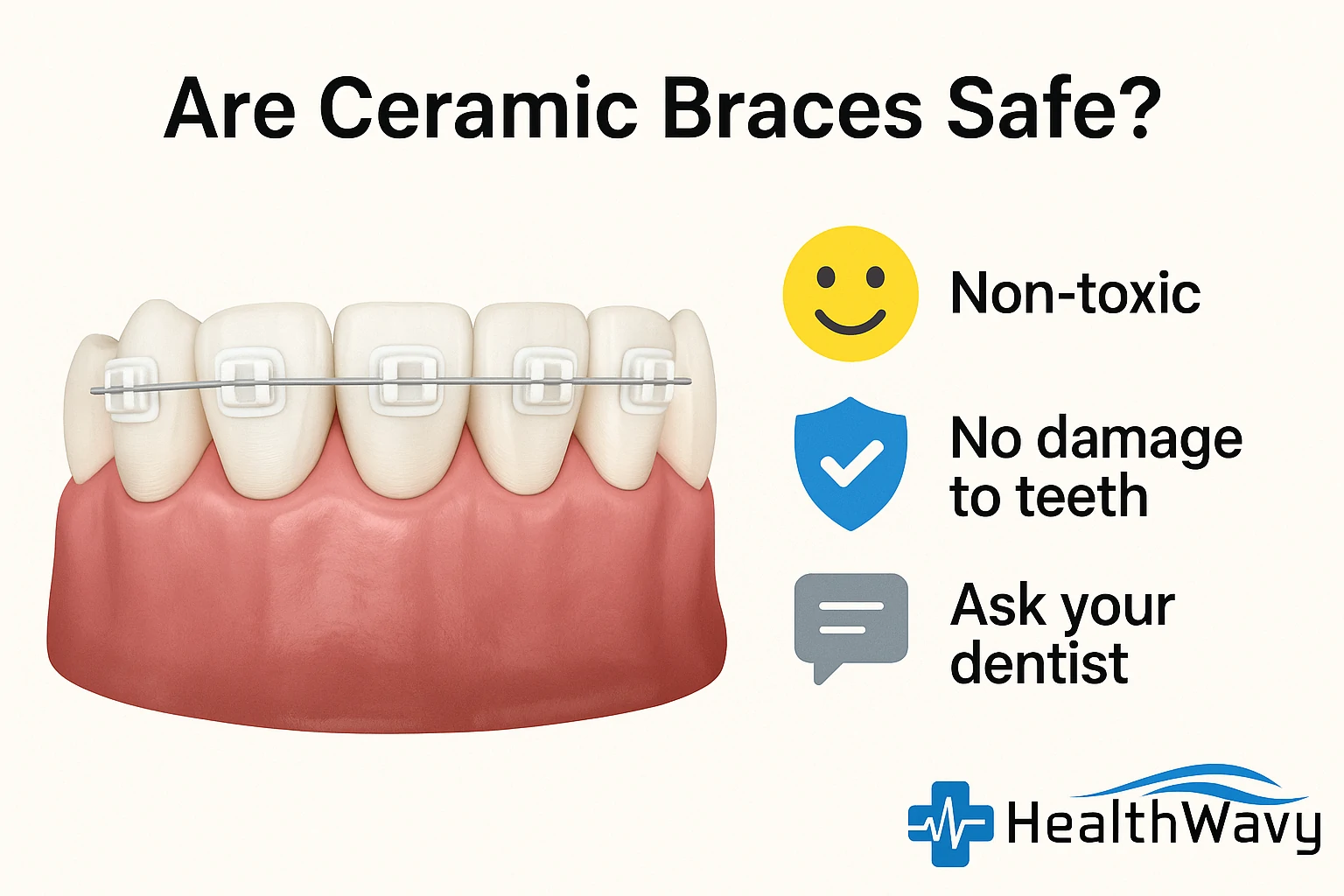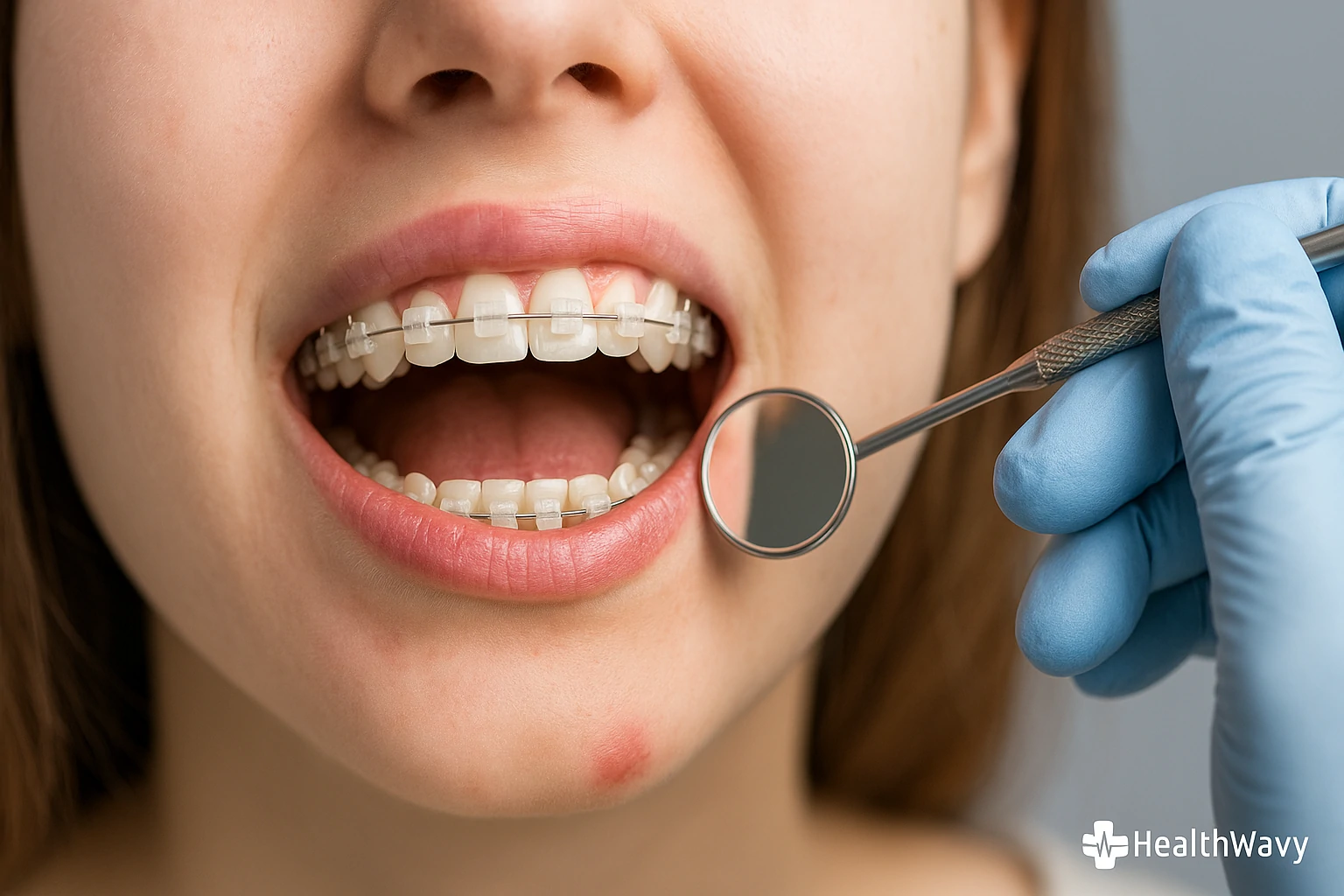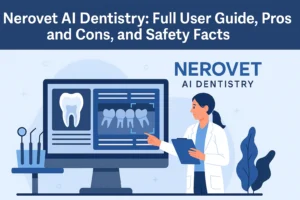Smiles leave a strong mark. They reflect mood, health, and confidence. Many people want straight teeth but worry about the metal look of traditional braces. Some feel nervous about long treatment plans or mouth pain. Others avoid braces because they feel too visible.
Ceramic braces give another path. These braces do the same work but do not look as bold. They match the Ceramic braces with color of your teeth. They fit well with daily life. They suit teens, adults, and anyone who wants clean results with less metal.
But big questions remain. Are ceramic braces safe? Do they break or stain? How long do they last? Are they worth the cost?
This guide covers every part. You will learn what ceramic braces are, how they work, what they cost, and how to care for them. You will also find real pros and cons. This is a full, clear guide that helps you decide what fits your life.
What Are Ceramic Braces?
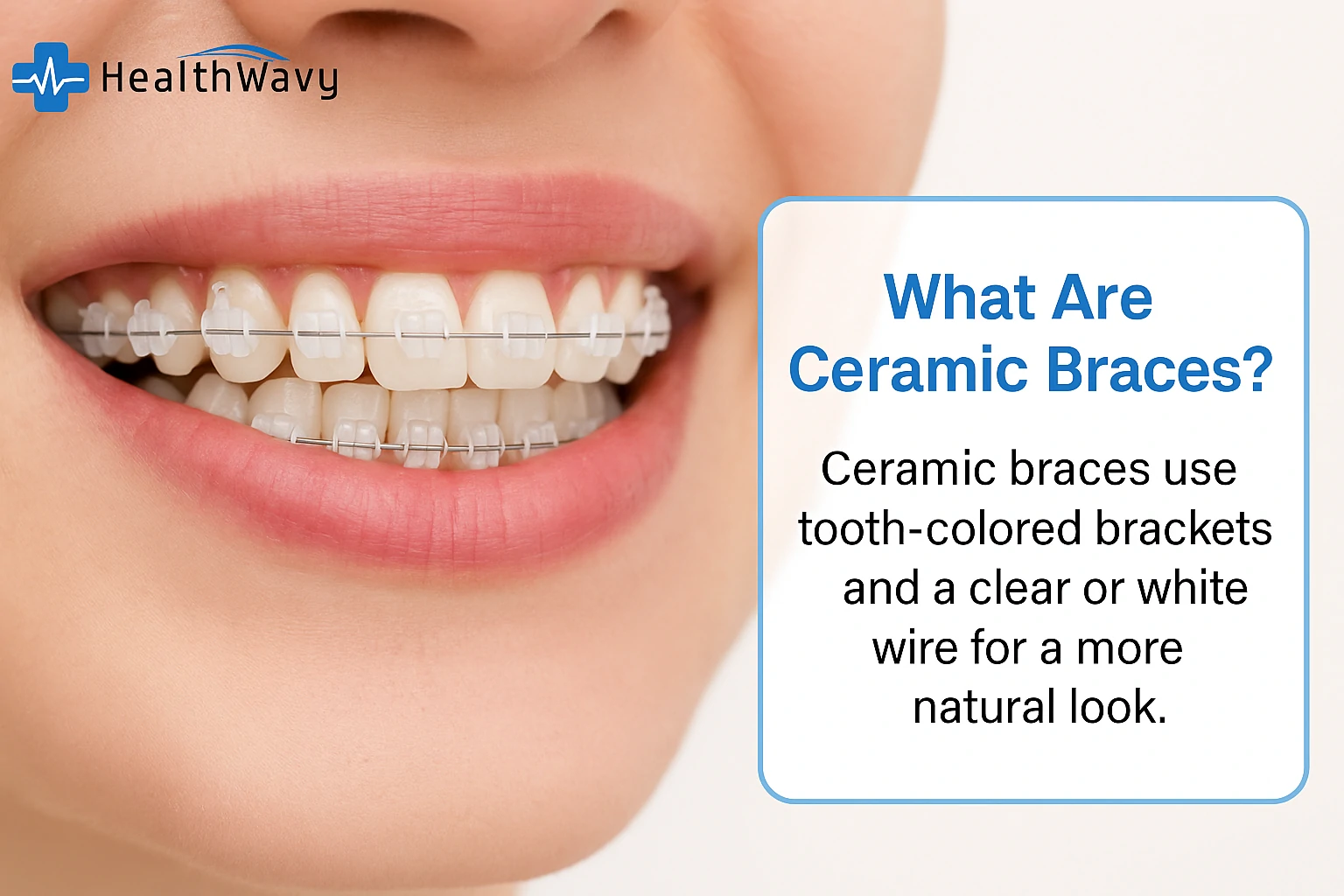
Ceramic braces are tools that help straighten teeth. They work like metal braces but look more natural. The brackets on ceramic braces match your tooth color. Some may look almost clear.
Each bracket sticks to the front of your tooth. A wire runs across all brackets. Tiny bands hold the wire in place. These bands can also be clear or white. This gives the braces a clean and low-key look.
The wire puts gentle pressure on your teeth. This moves them little by little. Your dentist checks your braces often and makes small changes. Over time, your teeth shift into better positions.
Ceramic braces fix many common problems. They help close gaps. They fix crowded teeth. They also improve bad bites or crooked alignment.
These braces work well for teens and adults. People often choose them because they look better than metal ones. They do the job without drawing too much attention.
What Are Ceramic Braces Made Of?
Ceramic braces use brackets made from composite ceramic. This material looks like your natural tooth color. The wires may be metal or clear. Some brands use frosted wires for a softer look.
These braces do not contain metal in the brackets. That makes them a good choice if you worry about metal allergies.
Are Ceramic Braces Safe?
Ceramic braces are safe. Dentists use them across the world. They have helped both teens and adults fix their teeth for years.
The brackets are made from hard ceramic. This material does not harm your teeth. It does not cause swelling or skin trouble. It does not rust or change inside your mouth.
Most wires used in ceramic braces are metal. Some wires come with a white coat to match the brackets. These wires are also safe. The rubber bands are soft and non-toxic. They do not hurt your mouth but may change color with food or drinks.
Ceramic braces are not as strong as metal ones. They can break if you bite hard foods or hit your mouth. Some people feel pressure when the braces come off. This may feel odd but does not cause damage.
To stay safe, follow the dentist’s rules. Brush your teeth after meals. Skip hard or sticky foods. Tell your dentist if a bracket breaks or moves out of place. A quick fix helps avoid bigger problems.
Are Ceramic Braces Safe with X-rays and MRIs?
Ceramic braces do not block X-rays. Your dentist or doctor can take images without removing them. The brackets do not hide the roots of your teeth or bone.
Most ceramic braces are safe during MRI scans too. Some wires may contain metal, so tell your doctor before the scan. If needed, the doctor may delay the scan or switch to another method.
The ceramic itself does not react with machines. It is non-metallic and stable. Always inform your care provider about your braces before any scan or procedure.
How Do Ceramic Braces Work?

Ceramic braces move your teeth one step at a time. Each tooth gets a small bracket. A wire runs through all the brackets. This wire pulls or pushes the teeth into a better place.
The dentist changes the wire at each visit. These changes guide your teeth in the right direction. Some patients wear rubber bands too. These bands help fix bite or jaw problems. Your dentist will explain when and how to wear them.
Most people wear ceramic braces for 18 to 36 months. Some finish early. Others take longer. It depends on your teeth and how well you follow the care plan.
Ceramic braces may work slower than metal ones. The brackets are softer, so your dentist makes careful moves. Still, the final result is solid. You get straight teeth and a lasting smile.
🦷 Steps to Ceramic Braces
👩⚕️ Consultation
The dentist checks your teeth and makes a plan.
🛠️ Bracket Placement
Each bracket is fixed to your teeth with glue.
📏 Wire Adjustment
The wire is shaped and tightened to guide movement.
✔️ Follow-Ups
Small changes are made at each visit to keep progress steady.
How Long Do Ceramic Braces Take?
Most people wear ceramic braces for 18 to 36 months. Simple cases may finish in less than two years. More complex cases may take longer. The brackets are delicate, so dentists move slower to protect them. If you miss visits or break brackets, your time may increase.
What Happens After Ceramic Braces Come Off?
Your teeth may look straight, but the work does not end when the braces come off. You will need to wear a retainer to keep your teeth in place. Teeth can shift back if you do not hold them steady.
Most people get a clear retainer or a fixed wire behind the teeth. The dentist will help you choose the right one. You may wear the retainer full-time at first. Later, you may only need it at night.
Clean your retainer with care. Brush it gently. Rinse it after each use. Do not leave it in hot places. Keep it in its case when not in use.
Wear your retainer as told. Skipping it can undo months of progress. A good routine keeps your smile in place for life.
Benefits of Ceramic Braces
Ceramic braces help people improve their teeth without changing how they present themselves. The brackets match the shade of your natural teeth. This gives a soft look that feels less noticeable in daily life.
Many adults and teens choose ceramic braces because they do not shine. They blend into your smile. You can speak, smile, and laugh without worry. In photos or in person, these braces stay in the background.
People often say ceramic braces feel more comfortable. The brackets have smooth edges. They sit gently in the mouth and do not rub as much. With good cleaning habits, they stay clear and bright. They do not rust or damage your teeth.
These braces also do what they are made to do. They fix crooked teeth, close gaps, and improve how your bite fits. The final result looks clean and feels strong. The outcome matches what metal braces can achieve.
Some people pay more to get this look. They choose comfort, appearance, and confidence. If you want a better smile without the metal style, ceramic braces may be the right path.
Cuspid Teeth and Braces: Why Dentists Focus on Them First
Risks and Downsides
Ceramic braces come with some limits. These do not make them a bad choice, but they do matter.
The brackets can chip or break. This happens more often than with metal braces. The ceramic material looks better but feels less strong.
Rubber bands used with these braces may stain. Drinks like coffee, tea, or soda can leave marks. Spicy food or sauces can also affect the color. You need to stay careful about what you eat and drink.
Some patients feel extra pressure when the brackets come off. The dentist must work slowly to avoid damage. The process may feel longer or more sensitive than with metal.
The brackets are a little bigger. This can cause more rubbing or discomfort at the start. You may need extra time to get used to how they feel.
Treatment may take longer in some cases. Because ceramic is softer, the dentist may need to move your teeth in smaller steps. That means more visits and more care over time.
Still, these downsides are not deal-breakers. If you follow care instructions and keep up with visits, ceramic braces can give you strong and lasting results.
Cost of Ceramic Braces
Ceramic braces often cost more than metal ones. The average price ranges from $4,000 to $8,000. Metal braces usually cost between $3,000 and $6,000.
The price depends on a few things. Your location plays a role. Some areas charge more than others. The experience of your orthodontist can also raise or lower the price. The type of ceramic brackets and how long you need them will also affect the total cost.
If you want clear wires or special bands, that may raise the price too. These extras add style but come at a higher cost.
Insurance may help. Some plans cover part of the treatment. Others only pay for basic metal braces. Always check your plan before you start.
Ceramic braces cost more, but many people think they are worth it. You get a clean look and quiet design that blends with your teeth. If that matters to you, and you can manage the care, ceramic braces can be a smart choice.
How to Choose the Right Orthodontist for Ceramic Braces
Look for orthodontists who have experience with ceramic braces. Ask how many ceramic cases they’ve handled. Read reviews. Ask about emergency support and payment plans.
Ceramic vs Metal Braces
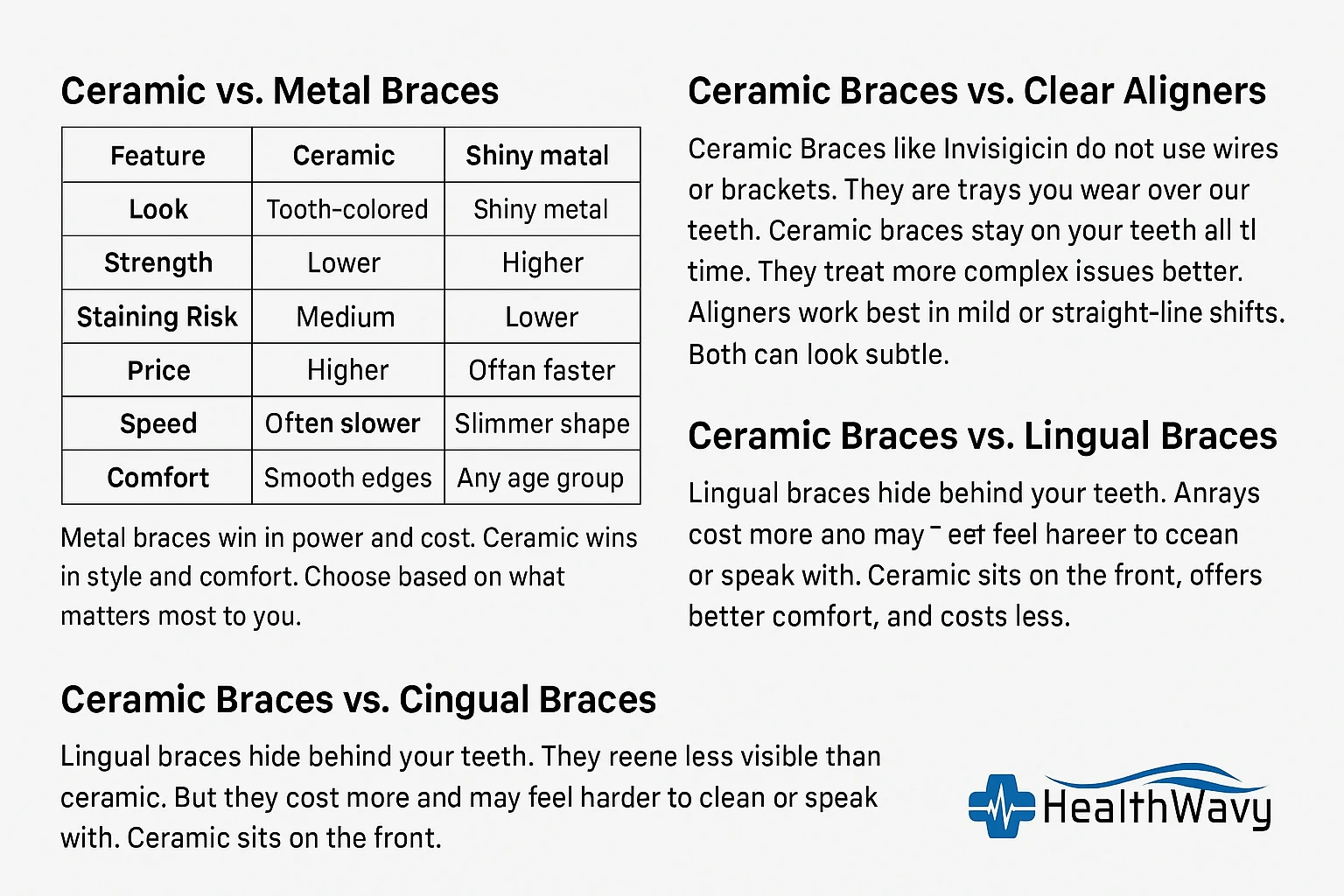
Here is a simple comparison:
| Feature | Ceramic Braces | Metal Braces |
|---|---|---|
| Look | Tooth-colored | Shiny metal |
| Strength | Lower | Higher |
| Staining Risk | Medium | Low |
| Price | Higher | Lower |
| Speed | Often slower | Often faster |
| Comfort | Smooth edges | Slimmer shape |
| Best For | Teens, Adults | Any age group |
Metal braces win in power and cost. Ceramic wins in style and comfort. Choose based on what matters most to you.
Ceramic Braces vs Clear Aligners
Clear aligners like Invisalign do not use wires or brackets. They are trays you wear over your teeth. You can remove them to eat or clean. Ceramic braces stay on your teeth all the time. They treat more complex issues better. Aligners work best in mild or straight-line shifts. Both can look subtle.
Ceramic Braces vs Lingual Braces
Lingual braces hide behind your teeth. They are even less visible than ceramic. But they cost more and may feel harder to clean or speak with. Ceramic sits on the front, offers better comfort, and costs less.
Do Ceramic Braces Hurt?
Ceramic braces do not hurt more than metal braces. You may feel tightness or sore gums after each adjustment. This goes away in a few days. The edges of ceramic brackets feel smooth, which helps comfort. Wax can help if you feel rubbing. Pain does not last long if you follow care steps.
Common Side Effects
Ceramic braces work well but may cause a few mild side effects. These effects do not last long. Most fade with proper care and time.
Some people feel sore gums after a wire change. This soreness often goes away in a few days. You may also feel pressure in your teeth when they begin to move. This pressure shows the braces are doing their job.
Brackets can sometimes scratch the inside of your cheeks or lips. This can cause small ulcers. Wax placed over the brackets can help. Your orthodontist can also smooth out any rough edges.
Hard foods may loosen a bracket. If this happens, call your orthodontist. Loose parts can stop progress or poke your mouth.
The rubber bands may turn yellow after eating or drinking dark items. Drinks like soda, coffee, or juice can stain the bands. This does not harm your teeth but can affect how the braces look.
Let your orthodontist know if you feel sharp pain or notice bleeding. Never skip a visit. Regular checks help catch problems early and keep your treatment on track.
What to Do if Something Breaks
Brackets or wires can break. Do not panic. Look in a mirror and check what moved. If a bracket came off, leave it alone and call your dentist. Do not try to fix it yourself.
If a wire pokes your cheek or gum, place dental wax over it. This helps with pain until your dentist can adjust it. You can also trim the wire with clean nail clippers in case of an emergency, but only if you cannot visit the dentist soon.
If a rubber band falls off, do not replace it on your own. Skip chewy or crunchy foods until you get help. The sooner you fix the issue, the less it slows your treatment.
Always call your dentist if something feels wrong. Quick action prevents bigger problems.
Do Ceramic Braces Work?
Ceramic braces work well. They fix crowded teeth, large gaps, bad bites, and jaw issues. They shape your mouth step by step.
The results are strong and lasting. Treatment may take 18 to 36 months. You may need a retainer after that. This keeps your new smile in place.
Ceramic braces do not move teeth faster. They just do it with more style. Your habits will shape the outcome. Brush daily. Keep your appointments. Avoid what can damage the brackets.
Who Should Get Ceramic Braces?

These braces do not fit everyone. Here is a basic guide:
Good for:
- Adults who want less metal
- Teens who care about looks
- People with good brushing habits
- People with mild to moderate dental issues
Not good for:
- Young kids with rough play
- Athletes in contact sports
- People who grind teeth
- People who drink lots of coffee or smoke
Your dentist will help you decide. They will check your bite, gums, and habits. If you fit the profile, ceramic may work well.
Ceramic Braces for Adults vs Teens
Teens often pick ceramic braces because they care how they look in school or photos. Adults like them at work or in social life. Both groups need to clean well and avoid hard food. Adults may be better at this due to habits. Teens need guidance to stay on track. Both can succeed with the right plan.
Are Ceramic Braces Good for Kids?
Ceramic braces are not the best option for young children. Kids often play rough or eat hard food. These habits can break the brackets. Ceramic is more fragile than metal.
Children also need to brush well and follow food rules. Some kids forget to clean their braces or eat food that causes damage. Metal braces handle rough habits better.
If your child needs braces, ask the dentist what works best. Ceramic may fit older teens who take care of their teeth. Metal braces may be safer for young kids.
Can You Play Sports or Instruments with Ceramic Braces?
Yes, you can still play sports with ceramic braces. But you should wear a mouthguard. This protects your brackets and your lips during contact sports.
If you play music, you may feel pressure on your lips or cheeks. Brass or woodwind players may need extra time to adjust. Some find that playing feels harder at first. Practice helps your mouth get used to the change.
Tell your coach or music teacher about your braces. They may suggest small changes to help you perform better. With time and care, most people continue their normal activities without trouble.
How to Care for Ceramic Braces
Ceramic braces need steady care. Clean habits help protect your teeth and make the braces last. A clear routine keeps your mouth healthy and your brackets looking neat.
Brush your teeth after every meal. Use a soft toothbrush and go slow around each bracket. Do not leave food stuck near the wires. Rinse with clean water after snacks or drinks.
Floss every day. Use a floss threader or a tool made for braces. Take your time. Flossing keeps your gums strong and prevents buildup between your teeth.
Avoid hard foods. Nuts, popcorn, and ice can break the brackets. Sticky sweets can pull wires loose. Cut crunchy food into small pieces and chew with care.
Stay away from dark drinks. Tea, soda, and coffee can stain the rubber bands. If you drink them, use a straw and rinse your mouth after. This keeps your braces looking clean.
Keep your dental visits. Do not miss checkups. The dentist checks for loose parts and makes small changes that keep your teeth moving in the right way.
Clean ceramic braces last longer and look better. Good care helps you avoid pain, repairs, or delays in your treatment. A few small steps each day lead to a smooth and safe journey toward a better smile.
Can You Eat Normally with Ceramic Braces?
You can eat most foods, but some items need care. Do not bite hard snacks, nuts, or ice. Avoid sticky candy or gum. Cut fruits and meat into small bites. Use your back teeth to chew. Drinking dark drinks like cola or tea often may stain bands. Use a straw to lower the risk.
Tips for First-Time Braces Users
- Keep dental wax with you
- Use a soft brush with a small head
- Avoid biting directly into apples or crusty bread
- Clean after every meal, even snacks
- Carry travel rinse or water bottle
Living with Ceramic Braces: What to Expect Day to Day
Ceramic braces feel different at first. You may speak with a slight lisp in the first week. Most people adjust quickly. Talking often helps your mouth adapt.
Eating also feels strange in the beginning. Take small bites. Chew slowly. Cut food into small pieces. Hard or sticky food can cause pain or break brackets.
Use dental wax if a bracket rubs against your cheek. This soft layer protects your skin until your mouth adjusts. Ask your dentist for extra wax at each visit.
After a few weeks, most people feel normal. The braces become part of your routine. You will speak clearly and eat with ease once your mouth gets used to them.
“I chose ceramic braces because I wanted something subtle. In the first week, I felt a little pressure. But after two weeks, brushing became part of my day like clockwork. I still drink coffee, just use a straw. Best choice I made.”
Myths About Ceramic Braces
Many people hear things about ceramic braces that are not true. Let’s clear up some common myths.
Some think ceramic braces break too easily. That only happens if you bite hard food or skip care. With normal use, they stay strong.
Others say they always stain. The brackets do not stain easily. It’s the rubber bands that change Ceramic braces with color. If you brush well and avoid dark drinks, they stay clean.
Many also believe ceramic braces are just for rich people. That is not true. Some insurance plans help with the cost. Many dental offices offer payment plans.
Ceramic braces give great results. The key is to follow the care steps and visit your dentist on time.
Pros and Cons of Ceramic Braces
| Pros | Cons |
|---|---|
| Match natural tooth color | Cost more than metal braces |
| Less visible in daily life | Brackets can chip or break |
| Feel smoother and gentler | Rubber bands may stain |
| No rust or corrosion | Slightly larger brackets |
| Fix crooked teeth and gaps well | May take more time to finish |
| Ideal for adults and teens | Not ideal for children or athletes |
| Boosts confidence and appearance | Removal may cause more pressure |
Blends with tooth color
Great for work or school looks
Gentle on lips
Brackets do not rub like metal
Breaks easier than metal
Needs care in eating habits
More than metal braces
But worth it for appearance
Top Brands That Make Ceramic Braces
Many brands make quality ceramic braces. Some top names include:
– Clarity™ Advanced (by 3M)
– Damon Clear™
– Radiance Plus™
– In-Ovation® C
These brands offer strong hold, low stain risk, and good comfort. Your dentist will help you choose based on your teeth.
Life After Ceramic Braces
When your braces come off, your teeth will look new and straight. Your orthodontist may give you a retainer. Wear it as told. It keeps your teeth from moving back. Visit the dentist on schedule. Keep up with brushing and flossing. Your smile will last if you care for it well.
New tools like Nerovet AI in dentistry show how tech can support health. To explore how this works, check our full guide on Nerovet AI Dentistry.
Final Thoughts
Ceramic braces give you more than straight teeth. They give you a way to fix your bite with grace. They do not shine or glare like metal. They blend with your life.
This guide showed you the facts. You learned what they are, how they work, what they cost, and how to care for them. You also saw the risks and rewards.
Now the choice is yours. If looks matter and you can stay clean and careful, ceramic braces offer strong value. If you want to save time or money, metal may suit you better.
Ask your orthodontist. They will guide you with care. A better smile is within reach.
Frequently Asked Questions
How long do ceramic braces stay on teeth?
Most people wear them for 18 to 36 months. Simple cases may finish sooner. Complex issues may take longer. The time depends on your teeth and how well you follow care rules.
Can ceramic braces fix all types of tooth problems?
They work for most alignment and bite issues. Some very complex cases may need metal braces. Your orthodontist will check and suggest the right type.
What food should I avoid with ceramic braces?
Avoid hard foods like nuts, popcorn, and ice. Stay away from sticky candy and gum. Limit drinks like coffee, tea, and soda that can stain bands.
Do ceramic braces change color over time?
The brackets usually stay the same shade. The elastic bands around them can stain from dark drinks or curry. Dentists replace them often to keep your smile clean.
Is it hard to clean ceramic braces?
You need to brush after every meal. Floss daily using tools that fit around braces. Rinse your mouth often. Regular cleaning stops stains and gum problems.
Are ceramic braces safe for kids?
They are safe but work better for older kids or teens. Young children may not clean well or avoid rough play. Metal braces may be stronger for them.
This guide offers general information only. It does not replace medical advice. Always ask your orthodontist before you start, stop, or change any dental care.


